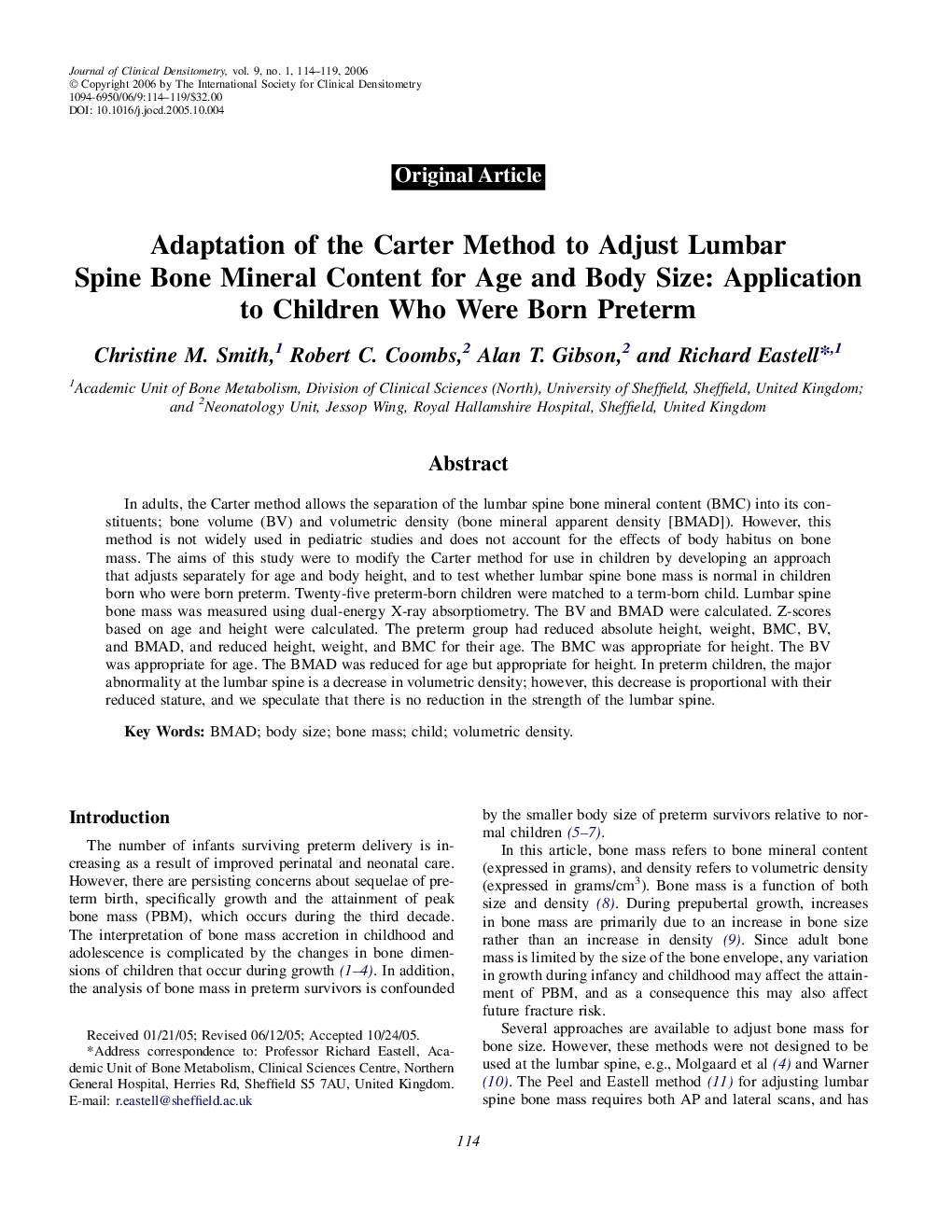| Article ID | Journal | Published Year | Pages | File Type |
|---|---|---|---|---|
| 3272008 | Journal of Clinical Densitometry | 2006 | 6 Pages |
Abstract
In adults, the Carter method allows the separation of the lumbar spine bone mineral content (BMC) into its constituents; bone volume (BV) and volumetric density (bone mineral apparent density [BMAD]). However, this method is not widely used in pediatric studies and does not account for the effects of body habitus on bone mass. The aims of this study were to modify the Carter method for use in children by developing an approach that adjusts separately for age and body height, and to test whether lumbar spine bone mass is normal in children born who were born preterm. Twenty-five preterm-born children were matched to a term-born child. Lumbar spine bone mass was measured using dual-energy X-ray absorptiometry. The BV and BMAD were calculated. Z-scores based on age and height were calculated. The preterm group had reduced absolute height, weight, BMC, BV, and BMAD, and reduced height, weight, and BMC for their age. The BMC was appropriate for height. The BV was appropriate for age. The BMAD was reduced for age but appropriate for height. In preterm children, the major abnormality at the lumbar spine is a decrease in volumetric density; however, this decrease is proportional with their reduced stature, and we speculate that there is no reduction in the strength of the lumbar spine.
Related Topics
Health Sciences
Medicine and Dentistry
Endocrinology, Diabetes and Metabolism
Authors
Christine M. Smith, Robert C. Coombs, Alan T. Gibson, Richard Eastell,
